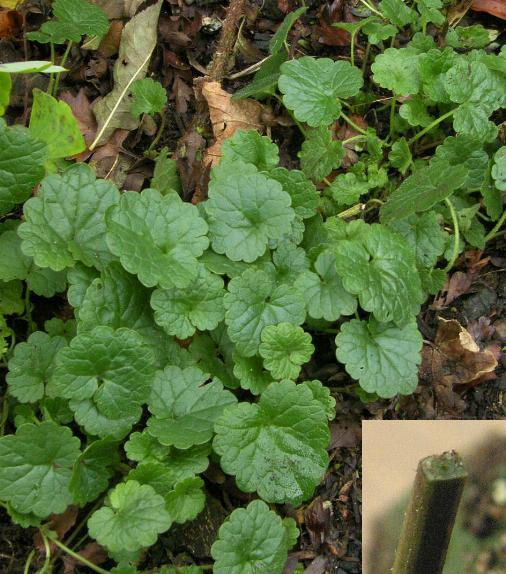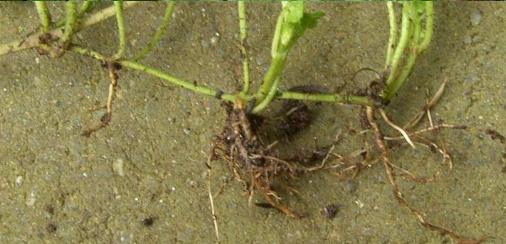Ground-ivyScientific Name: Glechoma hederacea syn. Nepeta glechoma, Nepeta hederacea
|
Ground-ivy is a perennial native to Europe and southwest Asia, spreading mainly by creeping stems which root at the nodes and sometimes by seed. It grows well in shady areas where it can be very invasive, overwhelming other plants. It can be a problem in grassed areas where fertility is poor, or in shade. There is a veriegated form which is said to be less invasive, but if it is allowed to seed the new plants would not be true and the green form would take over.
Before the introduction of hops, Ground Ivy was used to flavour ale due to the strong aromatic nature of the whole plant. This led to some of its colloquial names, Alehoof and Gill-over-the-ground - gill house being the term for an ale house.
The leaves are opposing on the stems and have long petioles, arising from the nodes where roots can grow if they touch the ground. They are round to kidney-shaped with scalloped edges. When crushed they have a mint-like aroma. The stems can also branch at these points. One distinguishing feature is that the stems are square (inset). This can rule out confusion as the plant may appear to be a Speedwell or herbaceous Malva which have a similar growth habit and leaves.
Flowering occurs in the spring. They are similar to other members of the Laminaceae - funnel-shaped, symmetrical blue-violet, borne in clusters of two or more attached to the leaf axils of upward facing stem tips.
The leaves have been used in salads and for flavouring in soups and drinks. Also the topgrowth gathered during flowering can be prepared for use in herbal remedies to treat the skin and internally for digestive disorders and catarrh. The latter has been treated by putting the juices up the nostrils or by preparing a snuff from the dried leaves. A purifying tonic can be prepared by boiling with young shoots of nettles to produce a bitter drink known as 'gill tea', for consumption in the spring. Externally an infusion of the leaves can be applied to relieve leg ulcers, burns and suppurating wounds.
Small areas can be cleared by hand ensuring that all fragments of the stems are removed. The fibrous roots do not regrow provided no part of the growth point is still attached. Do not add to the compost heap, unless it has been allowed to dry out completely. Better to put in the recycling bin.
Glyphosate is a suitable weedkiller to use, as it is taken into the perenniating stems, spray or paint on depending on the
situation. Use when the plants are growing well and are moving their sap at a higher rate. The greater the area of leaf that can be treated the better and resist the temptation to remove any topgrowth for at least two weeks after application.
In grassed areas some of the selective agents will work, but there is some resistance - refer to the manufacturer's instructions. The infested area may have to be treated with a non-selective herbicide and resown.
See Red Dead-nettle and Yellow Archangel, which is similar. Also Ivy-leaved Speedwell

